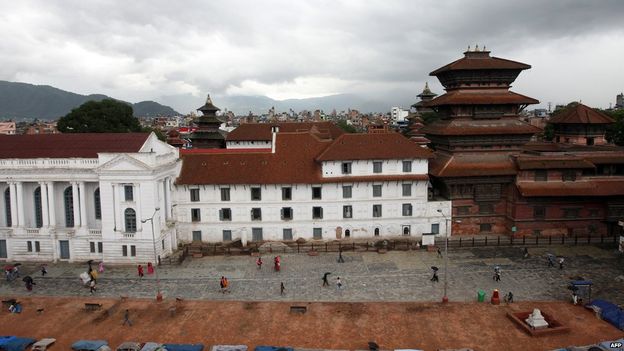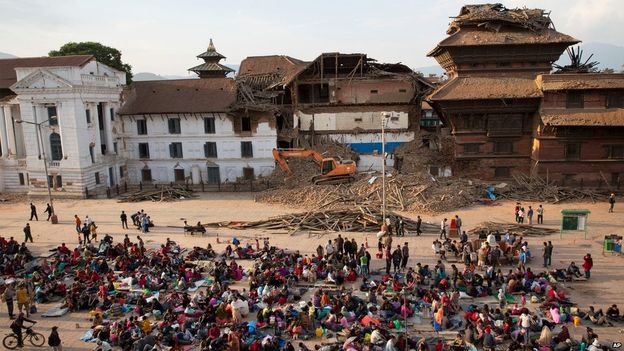A guest post by Divya Jayaram
It is indeed ironic how the fury of nature, in a matter of seconds, can wipe out buildings that have stood for centuries. The recent earthquake in Nepal proved that nature just debunks the futile attempts of man trying to overpower things that don’t belong to him! The destruction and damage of buildings within the Kathmandu Valley World Heritage property is not just cultural loss for the nation, but a loss to all mankind. Nepal, a small picturesque country that is 0.04 times the size of India [ 1/5th the size of Texas], has four inscribed UNESCO World heritage Sites, including three royal cities and several Hindu and Buddhist sites within the Kathmandu Valley. Most of these were severely damaged in the quake.
Disasters are inevitable; however reducing the risks that can cause severe impact is possible with mitigation strategies. The time immediately after a disaster is extremely crucial for cultural heritage. Managing post-disaster conservation of heritage buildings calls for preparation and mitigation of impacts from disaster to heritage buildings.
As an immediate response measure to the earthquake in Nepal, a crowdmapping website – Kathmandu Cultural Emergencies – has been created. Developed by Aparna Tandon ICCROM] and Rohit Jigyasu [ICOMOS-ICORP], its aim is to collect information on the the damage caused to cultural heritage sites and institutions in Nepal. With restricted access into the country and the ongoing rescue work, it was impossible to access the site to assess the damage for heritage sites. An appeal was made to locals, tourists and visitors, asking them to photograph the damage to traditional houses, buildings, museums, temples as well as any rubble that may contain fragments of a historic site, sculptures, sacred objects, etc., along with their location if possible. Tweetsters and Instagrammers hashtagged their photographs #heritagedamagenepal and #culturedamagenepal, tweeting pictures of earthquake-affected cultural and vernacular buildings. The information collated will be used to identify the extent of damage based on region, and will also help in planning the post-disaster recovery strategies.
While the initial priority is always to rescue those whose lives have been devastated in this horrific manner, there is also a sincere appeal to capture as much of the destruction as possible so that at least some of the remains can be salvaged once the human search and rescue operation is completed.
Nepal is still suffering significant aftershocks, and lack of basic facilities—food, shelter, water, electricity, communications—particularly in mountainous and remote areas. But this is what we know so far about the fate of Nepal’s World Heritage sites: Together we will work to restore the cultural heritage of a beautiful land and its beautiful people.
Divya Jayaram is a conservation architect based in California, USA. Her interest lies in heritage documentation, urban historic cores, managing heritage during crises, and community engagements for the conservation of cultural heritage. Divya has a Bachelors degree in Architecture from Bangalore, India and a Master’s degree in architectural conservation from the University of Edinburgh, UK.


